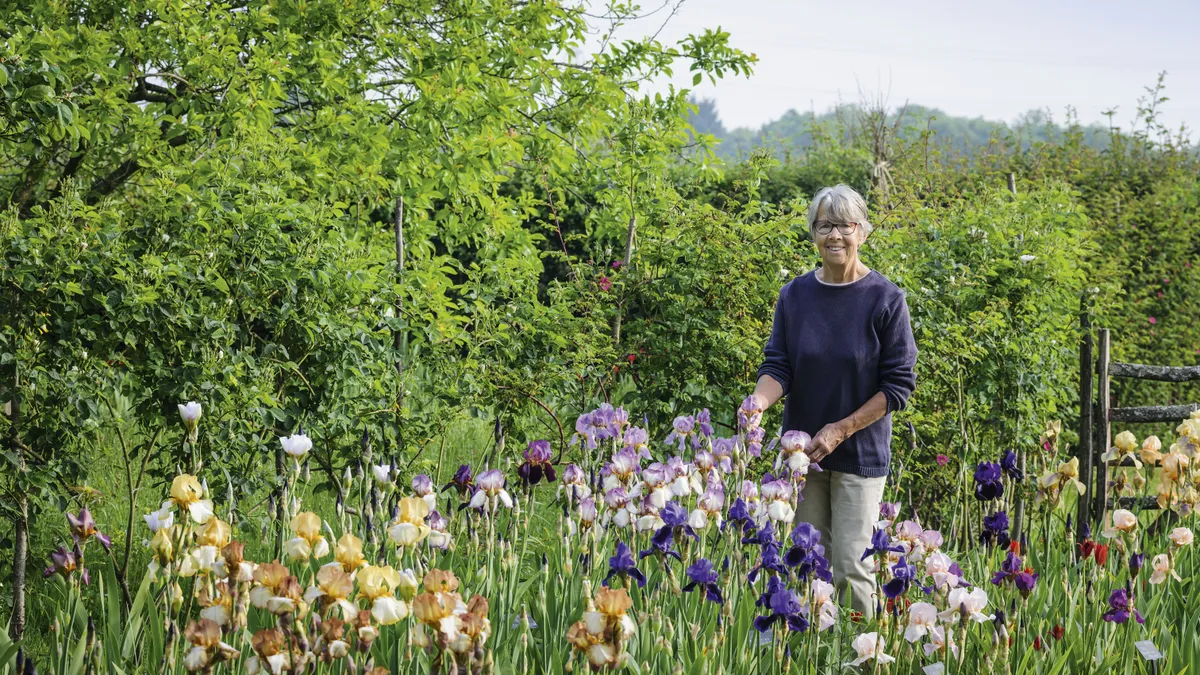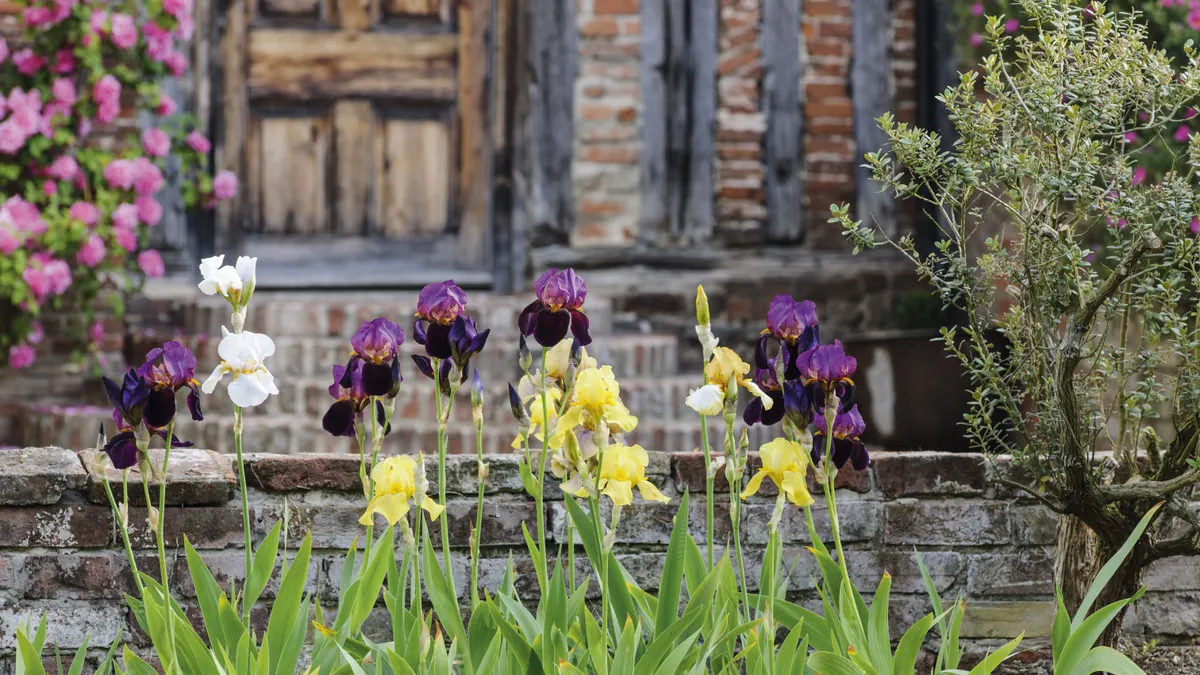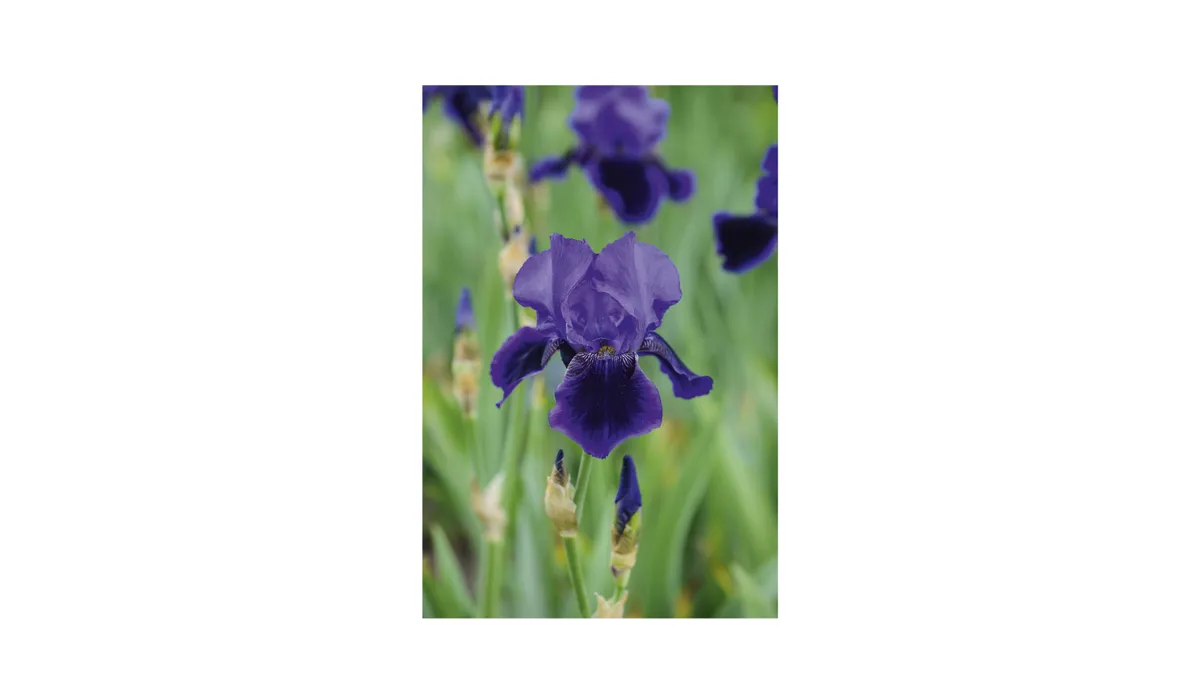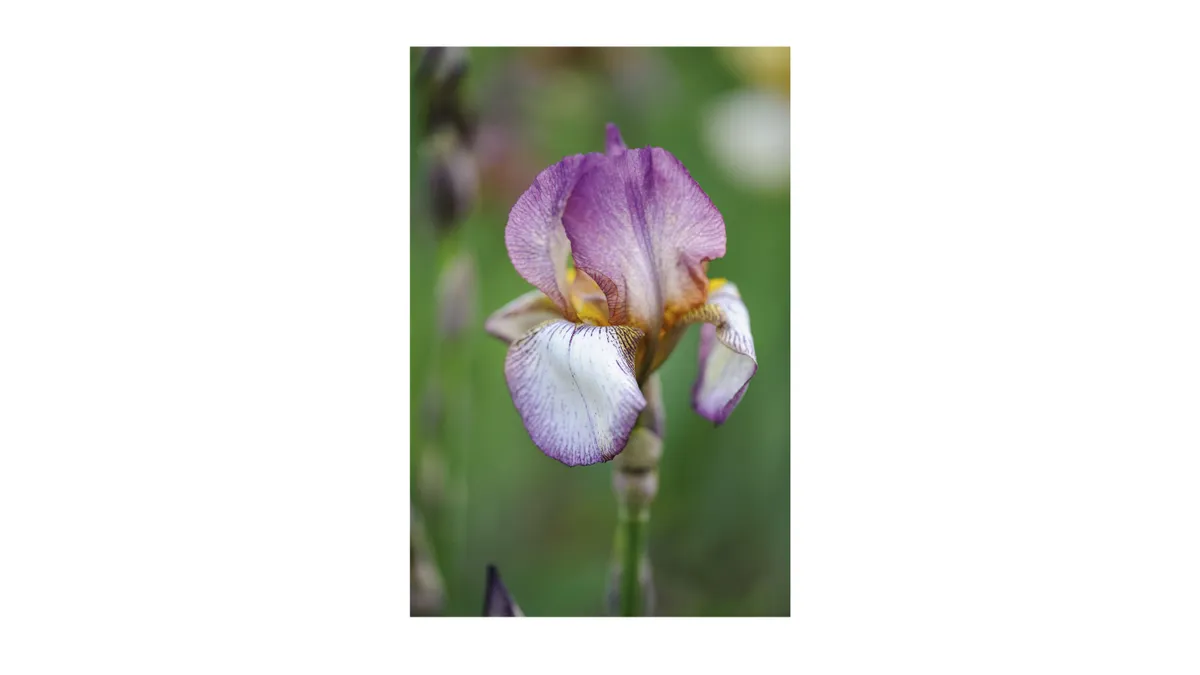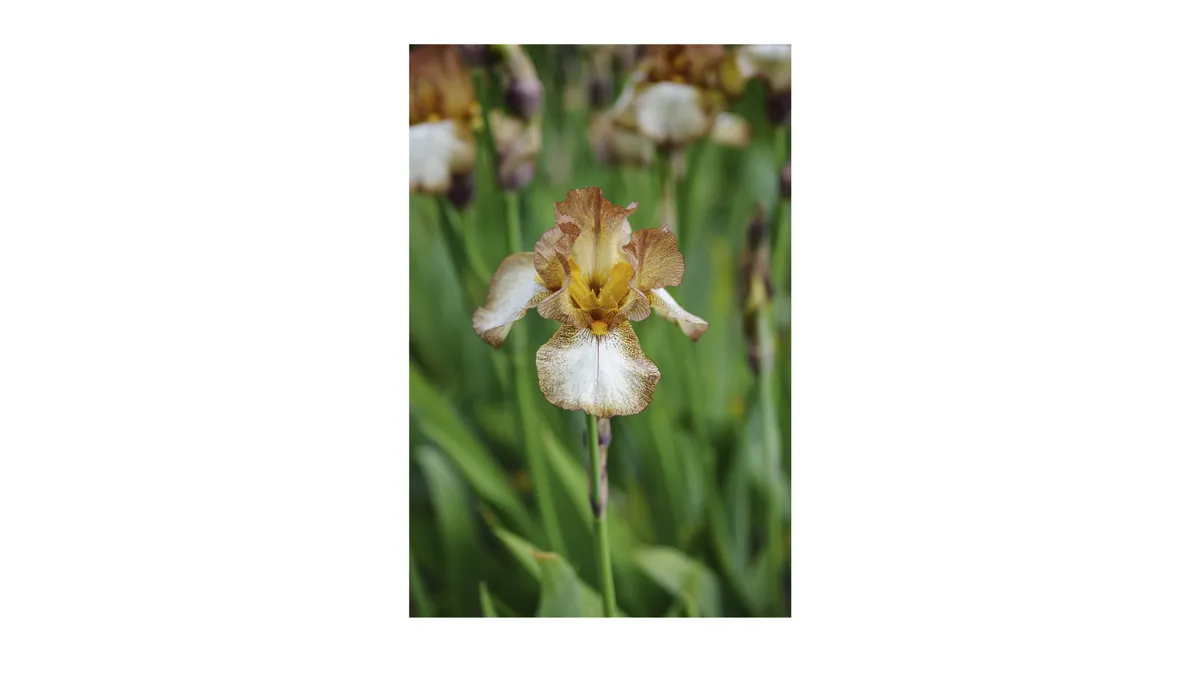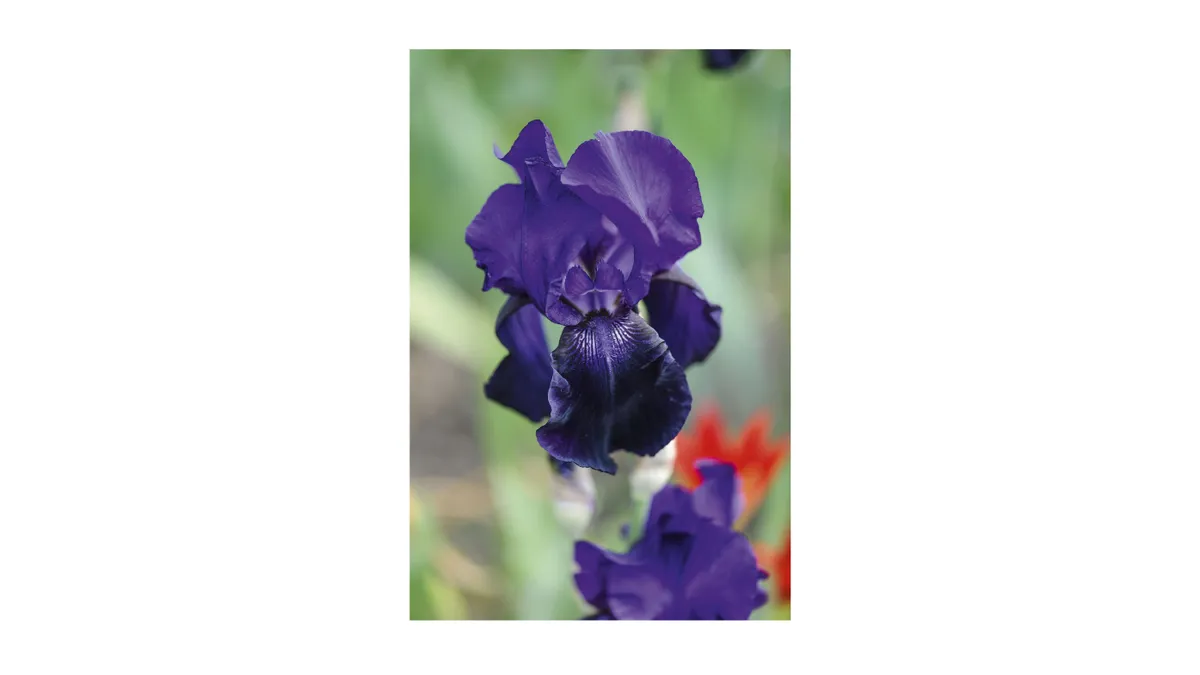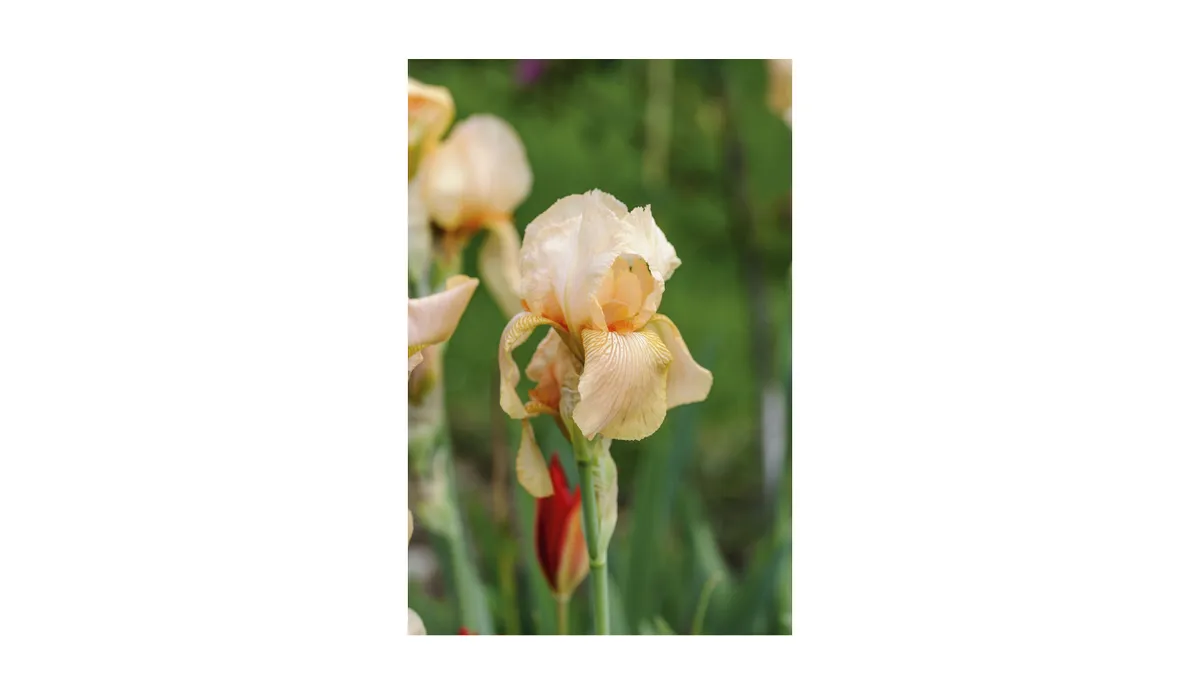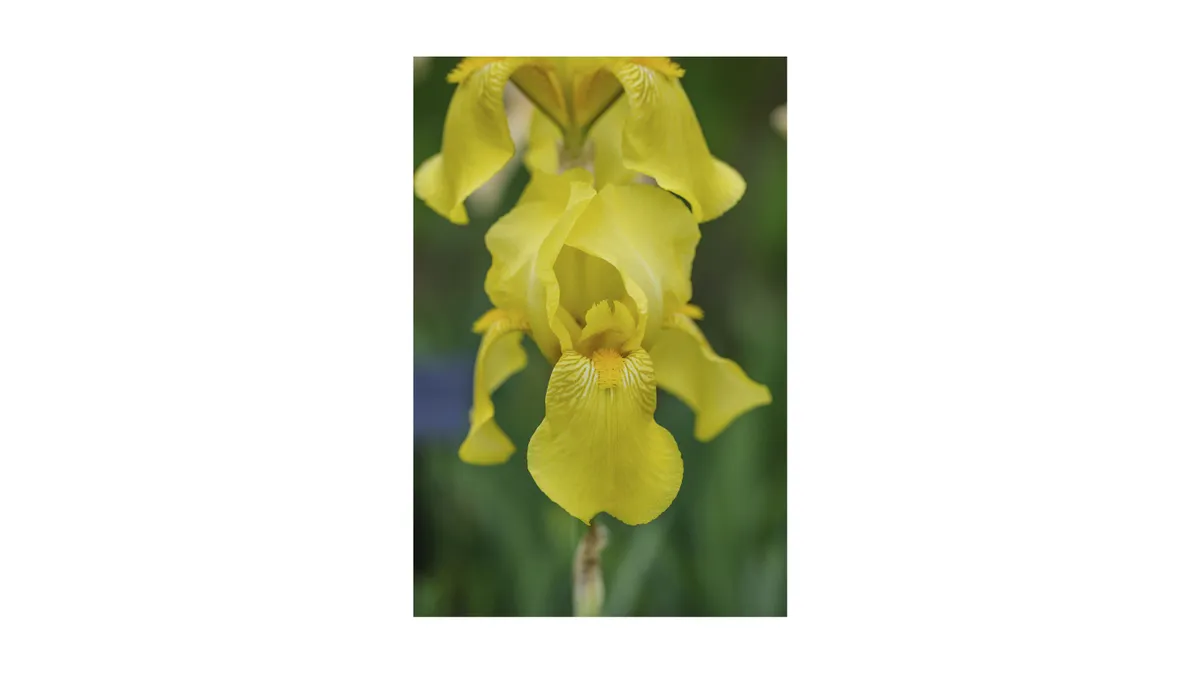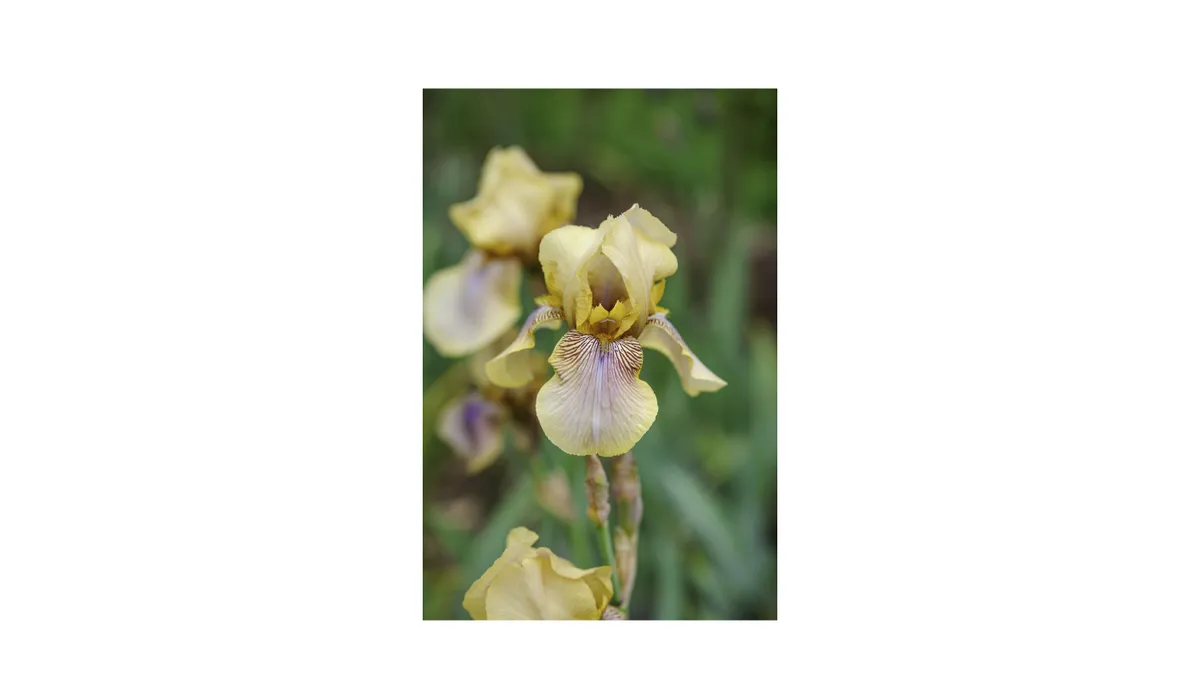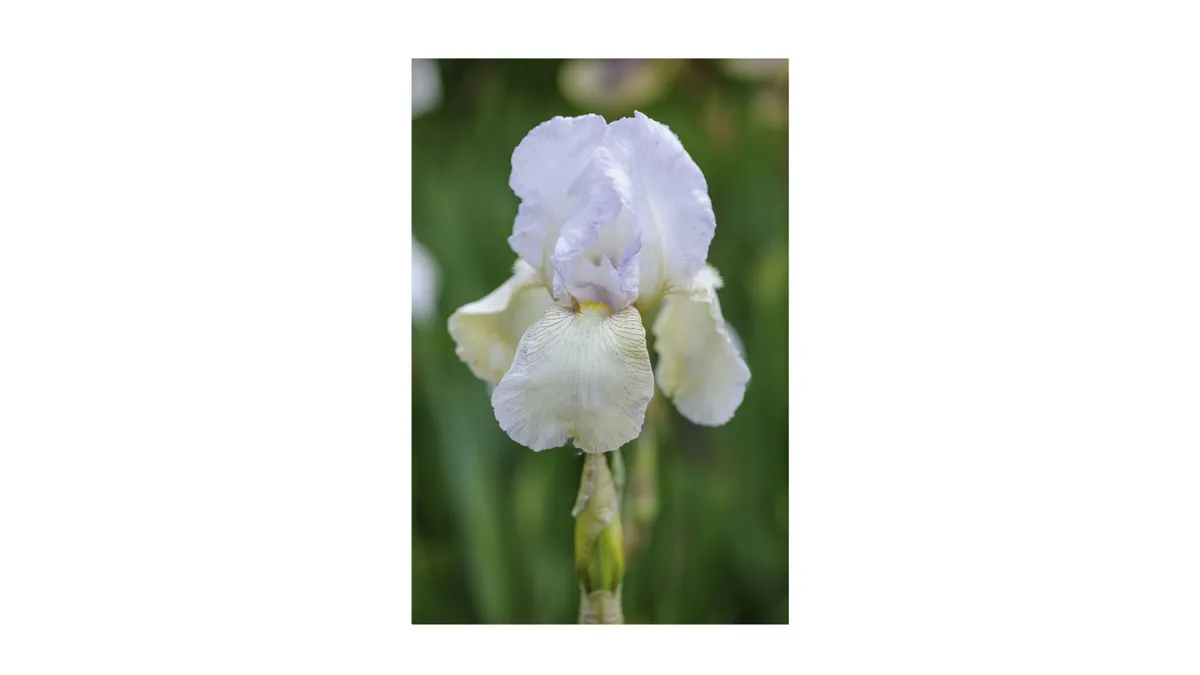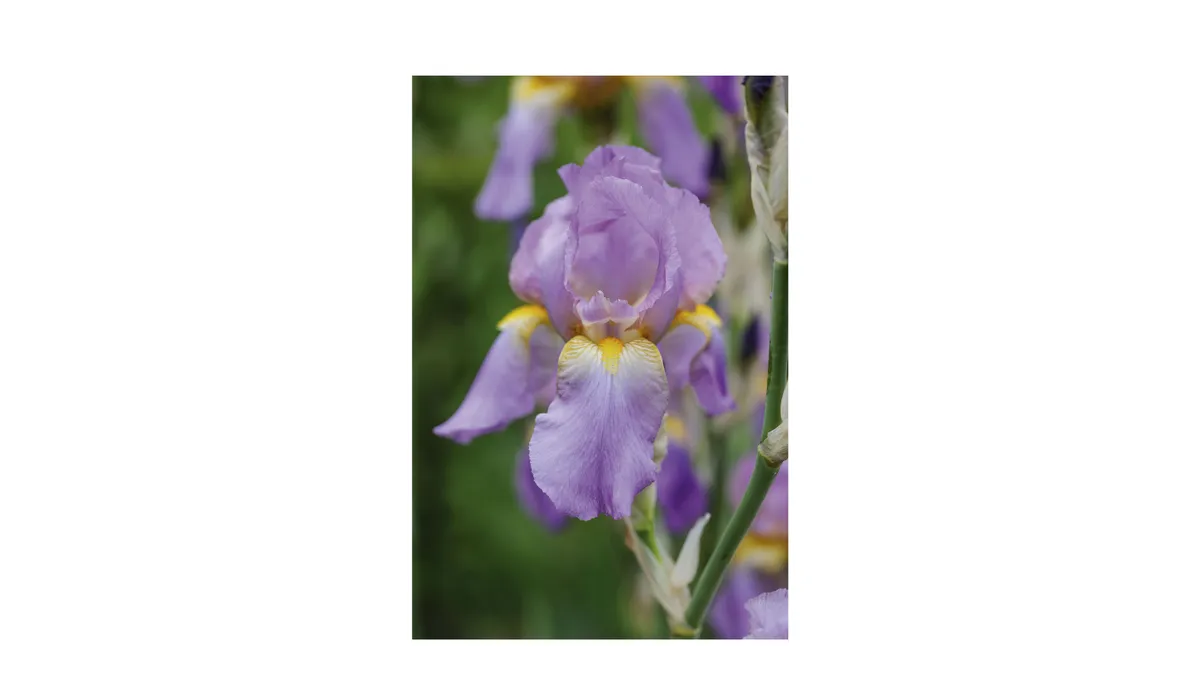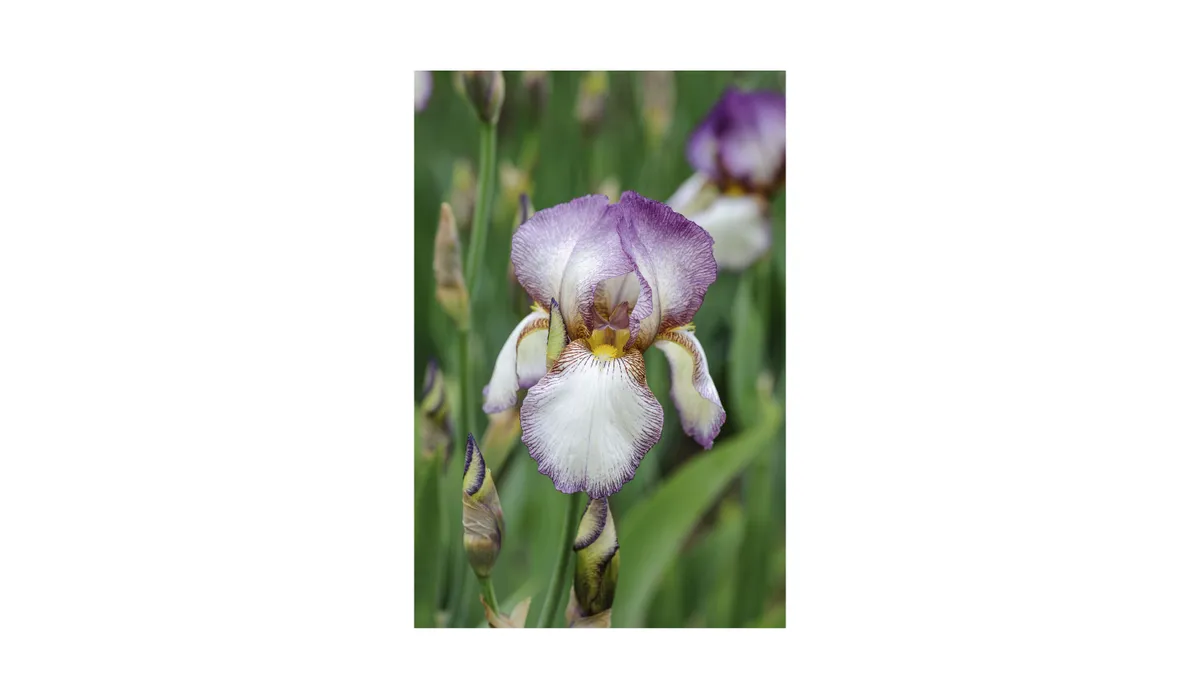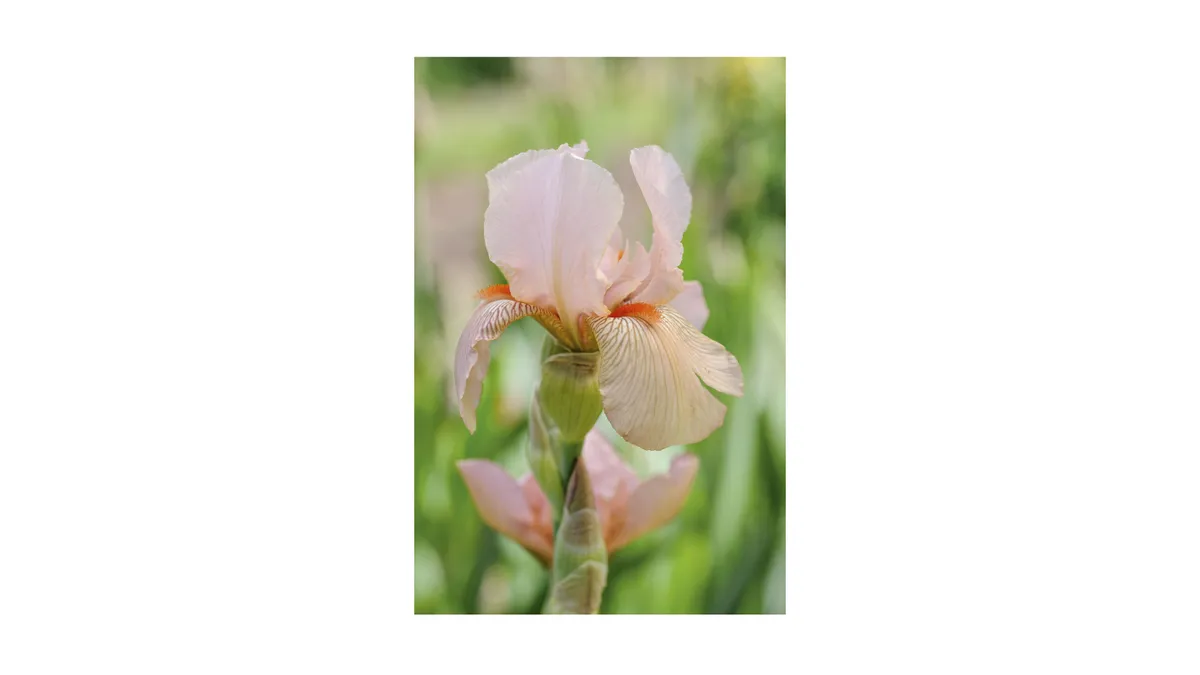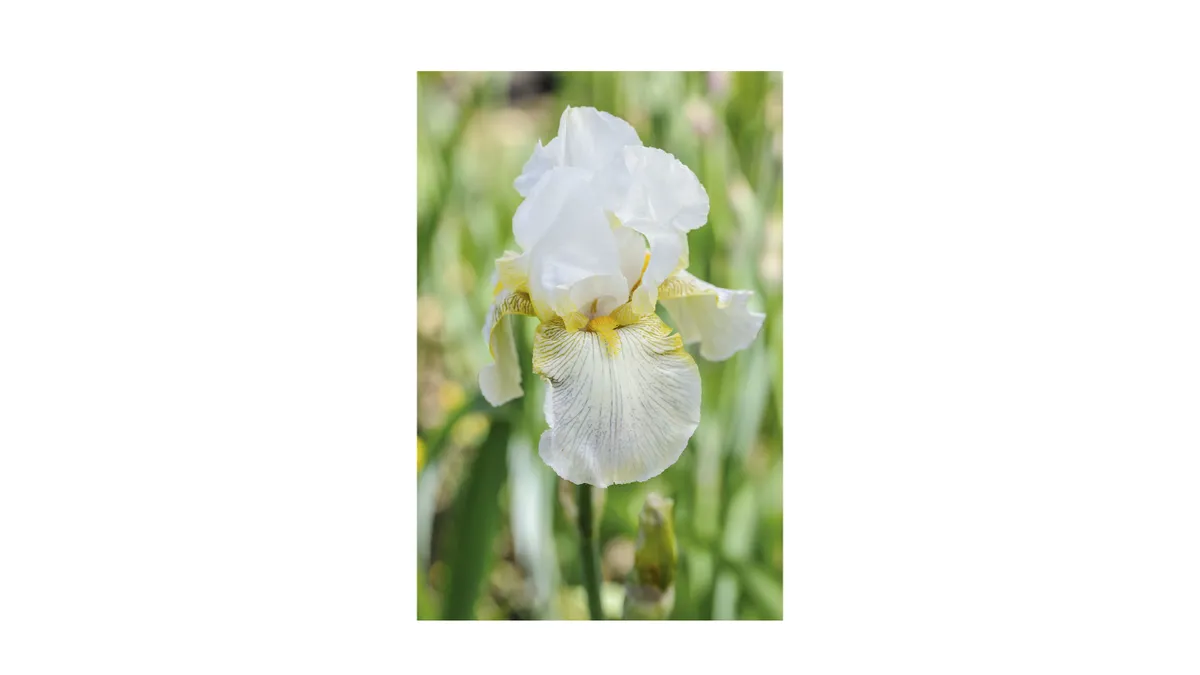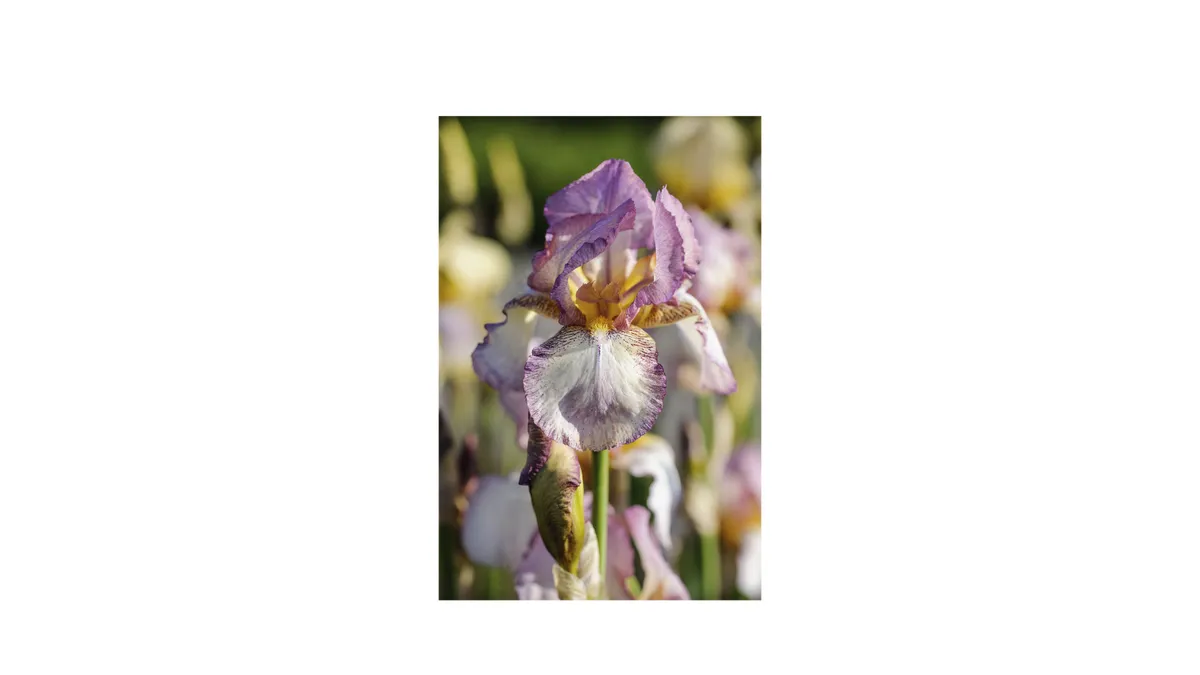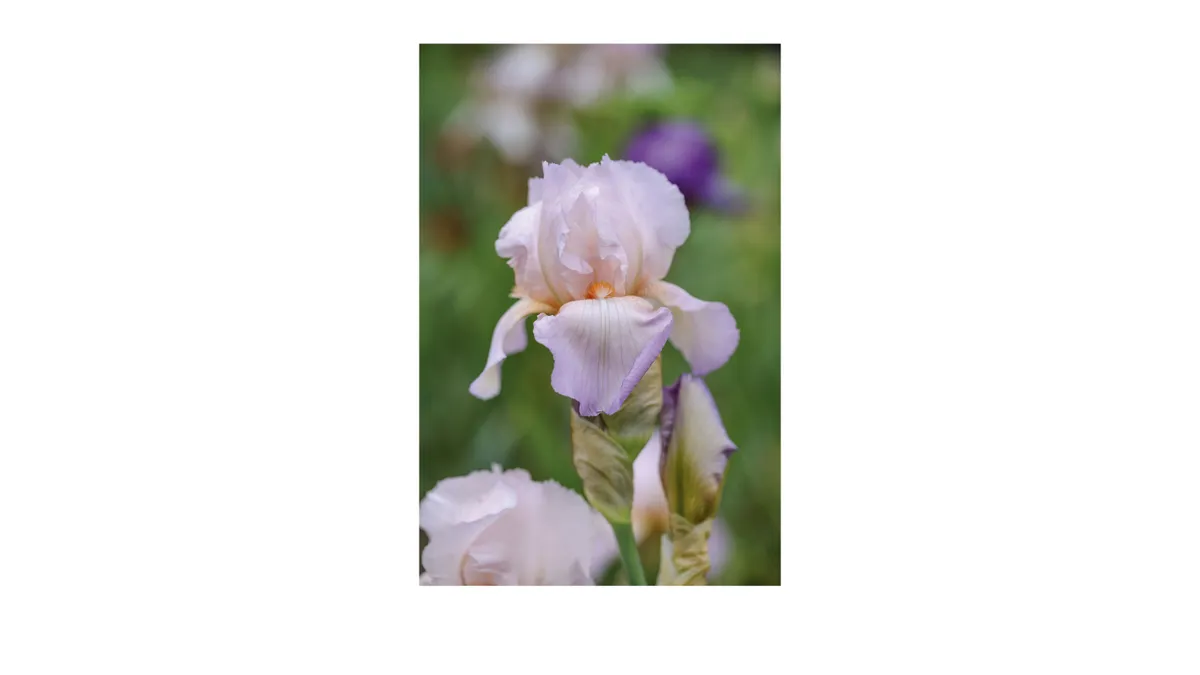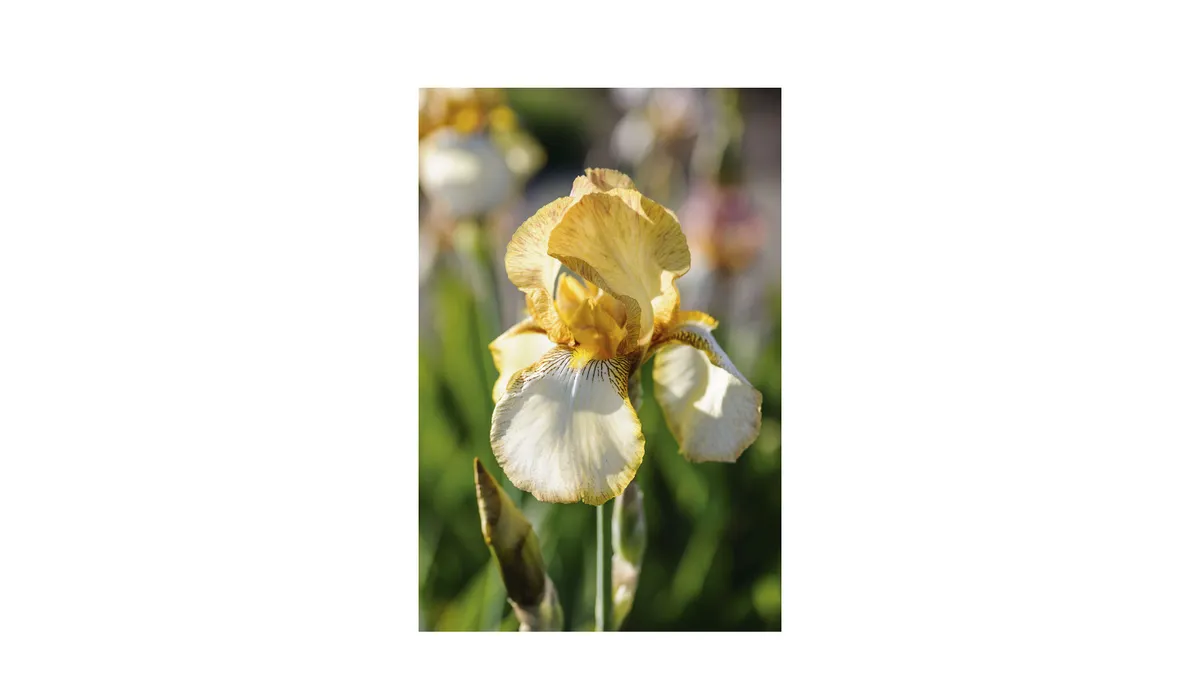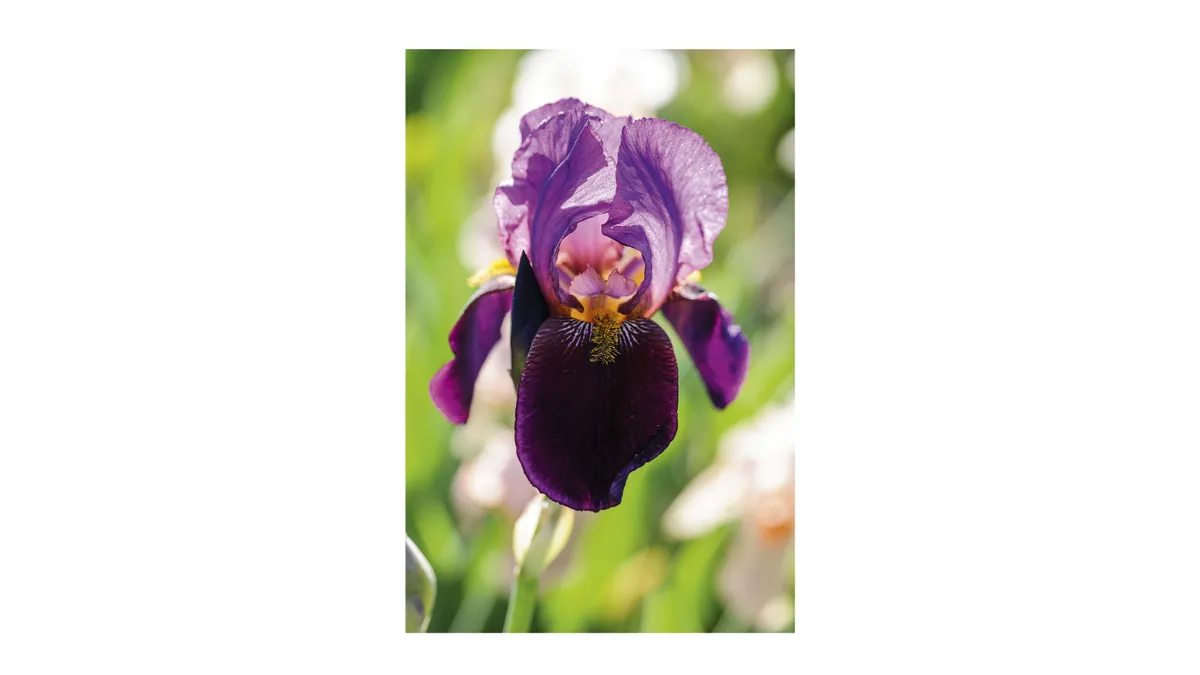I first encountered the Benton irises about crosses from a pair of tall, bearded iris parents, growing ten years ago when visiting the iris fields of Woottens of Wenhaston in Suffolk. At the time I had just moved to Somerset and had a south-facing, free-draining slope to experiment with so, in the spirit of getting- to-know, I chose 56 of the hundreds of bearded iris that fluttered in the fields and lined them out to trial. As I whittled the numbers down over the next three years, it was the Benton irises, with their very particular colour palette and form, that repeatedly spoke to me. In the words of the man who had selected them, it was their ‘elegance, pride and delicacy’ that set them apart, but also their mutable colouring, with ‘breaks’ as delicate as the speckling on a bird’s egg, that drew me in to wanting to know more.
Want to read about the 2023 Chelsea Garden which featured the Benton End Irises?
That man was Cedric Morris, a painter in Cornwall and Paris before founding the East Anglian School of Painting in 1937 with his partner, Arthur Lett-Haines – the young Lucian Freud and Maggi Hambling were among their pupils. But Morris was also a plantsman and gardener of considerable note. He had an impeccable eye for a good plant and his artist’s eye lives on in a number of species that he spent time refining. And in recent years his range of bearded iris has seen something of a revival.
The origins of Iris Benton
In 1935 Morris made a visit to see the work of iris breeder Angus Wilson and it was from this point on that he began his own process of selection. He made deliberate as many as a 1,000 seedlings a year. Choosing a pair of specific parents such as ‘San Francisco’ for good edging or ‘Sacramento’ for height, he learned through a process of refinement. Noting their strengths and weaknesses, he discarded those that had bloodlines prone to rhizome rot or weak stems and honed the plicatas, a term used to describe the patterning of stitched, stippled or banded markings that contrast with the base colour of the petals.
Here's more about medal-winning Chelsea Flower Show gardens in 2023
Morris and Lett-Haines moved to Benton End in 1940, bringing with them from their previous garden at The Pound a burgeoning collection. A series of images taken in 1947-48 for Country Life show the irises grouped en masse in the lower parts of the garden, but they were later moved and grown in number around the house. This may have been because iris like new ground every ten years, but it might also reflect the plants that one imagines were closest to Cedric’s heart.

The present day
When Sarah Cook (who has supplied the captions here) left the role of head gardener at Sissinghurst Castle in 2004, she made it her mission to bring as many as possible of the collection back into cultivation. Vita Sackville-West was friends with Cedric and inevitably, there were Benton irises in the gardens at Sissinghurst. Of the 90 that were named Sarah has found 25 Morris introductions with good provenance, and five more that await further verification. She has read every iris yearbook from 1935 to 1966 and her search for Benton irises has led her from the bookshelves of the RHS Lindley Library via the early catalogues of Orpington and Wallace Nurseries to plants that had survived across the Atlantic and Pacific.
To ensure the Bentons became available again Sarah gave a collection to David Howard of Howard’s Nurseries in Norfolk, where he amassed enough plants to exhibit at Chelsea in 2015. They had already surfaced as favourites in my own collection, but when I saw Cedric’s sophisticated eye across the full range I come closer to understanding this gifted plantsman through the plants he had honed and selected.
How to grow
Hailing from the magnesium-rich limestone of the Dolomites, the rhizomatous iris needs plenty of sunshine and free drainage. Though adaptable as garden plants, it is worth giving them a position in full sun where they will not be overshadowed. They prefer not to have companions so that they can harvest all the light, and are best grown alone to the front of a bed where they can bask or, as I grow them, at the foot of a sunny wall.

Their early growth and rush towards May flowering is made possible by the energy from the previous summer that is stored in the root. During flowering however, their whole root system dies and the plants go into a period of semi- dormancy in June and July after setting seed. The majority of the foliage at this point will wither and can be pulled away to allow good air circulation and light to fall on the rhizome. It is at this point and on a five to six year rotation that they need to be split. A single rhizome and fan of foliage should be taken from the outside of the clump and replanted with the rhizome at soil level, not covered, and the foliage angled like a deck chair with the body of the rhizome in the sun.
16 key Benton Irises
Iris ‘Benton Nutkin’

Given to me by a friend of Cedric Morris who told me it was one of Morris’s favourite irises. Standards the colour of a red squirrel, the plicata pattern on the falls is of the same colour. There is a trace of violet near the beard. 90cm. RHS H6, USDA 3a-10b†.
Iris ‘Benton Daphne’

Named for Daphne Bousfield, a student at Benton End in 1939. Classic plicata markings in ‘old rose’ pink. The standards are suffused with creamy yellow, the falls are a pale cream, with old rose. 80cm. RHS H6, USDA 3a-10b.
Iris ‘Benton Opal’

An iris I have discovered growing in gardens in the USA, Switzerland and Czechia. Its blooms are of the palest opalescent lilac, with faint lilac plicata markings round the edge of the falls. 80cm.RHS H6, USDA 3a-10b.
Iris ‘Benton Apollo’

Given to me by the son-in law of Reg White, who was a gardener for Morris in the 1960s. The standards and falls are a bright yellow, with a faint ‘green’ shadow on the falls. 90cm. RHS H6, USDA 3a-10b.
Iris ‘Benton Olive’

Named for Olive Murrell, who sold Morris’s irises at Orpingtion Nurseries. Strong and vigorous, its standards and falls are an unusual olive colour, the falls heavily marked (stained) with royal purple. 1m. RHS H6, USDA 3a-10b
Iris ‘Strathmore’

In 1948 this was shown at the Chelsea Flower Show, and the then Queen Elizabeth consented to have it named Strathmore after her home. A clear apricot pink, good shape and unusual colour. 1m RHS H6, USDA 3a-10b.
Iris ‘Benton Nigel’

Named for Nigel Scott who gardened at Benton End from 1952, after visiting with Beth Chatto, it received an RHS Award of Merit in 1956. Falls are a deeper violet blue than standards. 90cm. RHS H6, USDA 3a-10b.
Iris ‘Benton Lorna’

Named for Lorna Styles who rented Morris’s house The Pound, it has rich violet standards and white falls with a violet edge. Morris was deliberately breeding for this plicata pattern on petals. 95cm. RHS H6, USDA 3a-10b.
Iris ‘Benton Cordelia’

It was awarded the Dykes Medal in 1955 (the highest accolade an iris can get). The buds are too tight against the stem, but the buds are a beautiful lilac, the flowers open to a very attractive pale pink. 1m. RHS H6, USDA 3a-10b.
Iris ‘Benton Old Madrid’

A graceful iris with flowers that are diploid rather than the more usual polypoid, making it look less heavy. Standards and falls are the same clear orchid pink, contrasting with darker buds. 1m. RHS H6, USDA 3a-10b.
Iris ‘Benton Judith’

Named for Judith Wogan, a secretary to the Arts League of Service, who staged Morris’s first one-man exhibition in 1925. Has almost black falls, and a paler purple standards. 90cm. RHS H6, USDA 3a-10b.
Iris ‘Silvery Moon’

One of my favourites, with large, well-shaped flowers. Standards and falls are white, tinted with mother- of-pearl. Yellow and brown striations at the base of the petals give it great beauty. 95cm. RHS H6, USDA 3a-10b.
Iris ‘Benton Susan’

Vigorous and strong, it stands well in the garden. The standards are brown and yellow, the falls edged with a narrow band of the same colour, and there is a light dusting of purple- brown on the falls. 95cm. RHS H6, USDA 3a-10b.
Iris ‘Storrington’

Named for the town in West Sussex, ‘Storrington’ has very long falls of a deep velvety purple and standards that are a paler bishop’s purple that contrast with the flashes of orange at its centre. 1m. RHS H6, USDA 3a-10b.
Iris ‘Crathie’

I have always assumed that this was named for Crathie Kirk near Balmoral. Standards and fall are a beautiful shell pink, The bright orange beard is highlighted by a touch of grey in the tone of the falls. 90cm. RHS H6, USDA 3a-10b.
Iris ‘Benton Deidre’

One of the first of the Cedric Morris irises to come into my collection. Originally described as yellow, it is a very vigorous, deep pink iris. The standards are rose pink, and the falls edged with the same colour. 1m. RHS H6, USDA 3a-10b.
Where to buy Benton irises
Beth Chatto Gardens Elmstead Market, Colchester, Essex CO7 7DB. Tel 01206 822007, bethchatto.co.uk
Woottens of Wenhaston The Iris Field, Hall Road, Wenhaston, Suffolk IP19 9HF. Tel 01502 478258, woottensplants.com
*Holds an Award of Garden Merit from the Royal Horticultural Society. †Hardiness ratings given where available.
